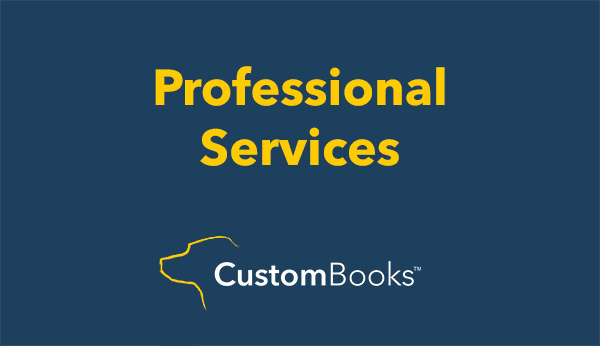Why Smart Operators Don’t Panic—They Strategize
Tariff headlines are designed to induce anxiety. They spike media impressions, fuel political drama, and create chaos for small to mid-sized businesses (SMBs) trying to make level-headed decisions.
And if you’re like most SMB operators, your first thought when hearing about new tariffs is:
“Do I need to raise prices?”
But here’s the cold truth: reacting without real data will cost you more than any tariff ever could. Panic-pricing alienates customers, destroys margin predictability, and damages your brand’s reliability.
So before you hit that “update pricing” button in your ecommerce dashboard, let’s walk through what tariffs actually mean for your current inventory, your cost of goods sold (COGS), and your pricing strategy.
What Tariffs Really Do (And Don’t Do)
“Tariffs don’t happen until the goods get to the port and hit the paperwork.”
— Kurt Kunselman, Founder of CustomBooks™
One of the biggest misconceptions is that tariff changes apply to all your current stock.
They don’t.
New tariffs apply to future shipments—not the goods you already have on your shelves or sitting in your 3PL warehouse. That means:
- Your current inventory is locked in at its original landed cost.
- You have a margin advantage on existing SKUs.
- You can maintain pricing stability—if you know which goods are tied to which cost layer.
The real risk isn’t the tariff. It’s your visibility into which inventory layer is affected and when.
The Hidden Problem: Poor Inventory Cost Tracking
Most SMBs don’t have the systems in place to track landed cost by SKU, date, or tariff impact.
This leads to three dangerous scenarios:
- Premature Price Increases: Raising prices before it’s necessary causes unnecessary churn and slows sales—especially when competitors with older inventory haven’t adjusted yet.
- Margin Confusion: Without knowing your actual COGS, you can’t make smart pricing decisions. This puts you in a constant reactive mode.
- Trust Erosion: When customers see inconsistent pricing or sudden hikes, it signals instability. That breaks trust faster than a missed delivery window.
What You Should Do Instead
The goal isn’t to outguess the next tariff. It’s to build a system that keeps you calm, profitable, and informed—no matter what external pressure hits.
✅ Track Landed Cost by SKU and Arrival Date
This means logging:
- Actual purchase price
- Duties and fees
- Freight and handling
- Date of port entry
Software like CustomBooks™ lets you streamline this process, so each SKU has a timestamped cost layer associated with it.
✅ Segment Pricing by Inventory Layer
Instead of applying one price across your catalog, segment pricing logic by:
- Cost layer (pre-tariff vs post-tariff)
- Channel (retail, wholesale, ecommerce)
- Margin protection thresholds
✅ Communicate Value, Not Just Price
If/when you need to increase prices, tell your customers why—and do it with confidence.
“Due to new import tariffs affecting future shipments, we’re adjusting pricing on select items beginning next month. Inventory purchased before this change remains at current prices while supplies last.”
The Strategic Advantage of Visibility
Most SMBs operate on instinct and rough math. The ones who thrive during volatility?
They run data-driven inventory systems that track:
- SKU-level COGS
- Cost layering based on arrival date
- Tariff-related adjustments
- Real-time profitability reports
Case in Point: The Smart SMB Operator
Let’s say you’re importing industrial equipment components. You’ve got 3 months of inventory sitting in your warehouse that landed before a 10% tariff went into effect.
Your competitor panics and raises prices across the board immediately. Their volume drops, customer complaints rise, and churn increases.
You?
You maintain your current pricing for those 3 months, ride the margin advantage, and message it clearly to customers:
“Locked-in pricing through Q2. No surprise hikes here.”
You win twice:
- ✅ Increased conversion and brand trust
- ✅ Higher profit margin on existing inventory
What Happens If You Ignore This?
If you’re not tracking landed cost per SKU or matching pricing to inventory layers, you’re exposed to:
- Margin erosion: You might sell goods below post-tariff COGS without realizing it.
- Overpricing: You could price out customers when competitors haven’t raised theirs.
- Financial blind spots: You’ll struggle to forecast profit or cash flow during volatile periods.
Strategic Takeaway
Tariffs will come and go. If you let headlines dictate your pricing, you’ll always be at the mercy of chaos.
The solution isn’t to react. It’s to prepare.
With the right inventory and custom accounting software—like CustomBooks™—you gain:
- ✅ Visibility into what inventory is affected (and what isn’t)
- ✅ Accurate, SKU-level COGS that reflect reality
- ✅ Tools to make smarter pricing and purchasing decisions
📘 Download the No-Stress SMB Playbook
Learn how to track inventory the smart way, protect your margins, and grow with confidence—even in turbulent markets.
📥 Download the Playbook 💬 Book a CustomBooks DemoFinal Word: Don’t raise prices until your numbers tell you to. Your customers (and your bottom line) will thank you.






















.png)



